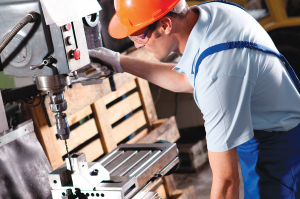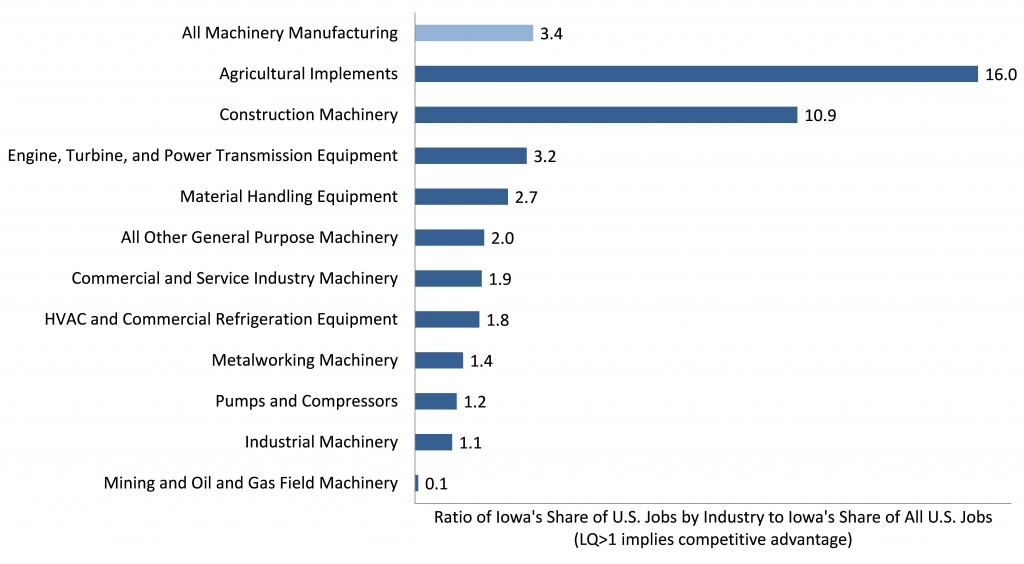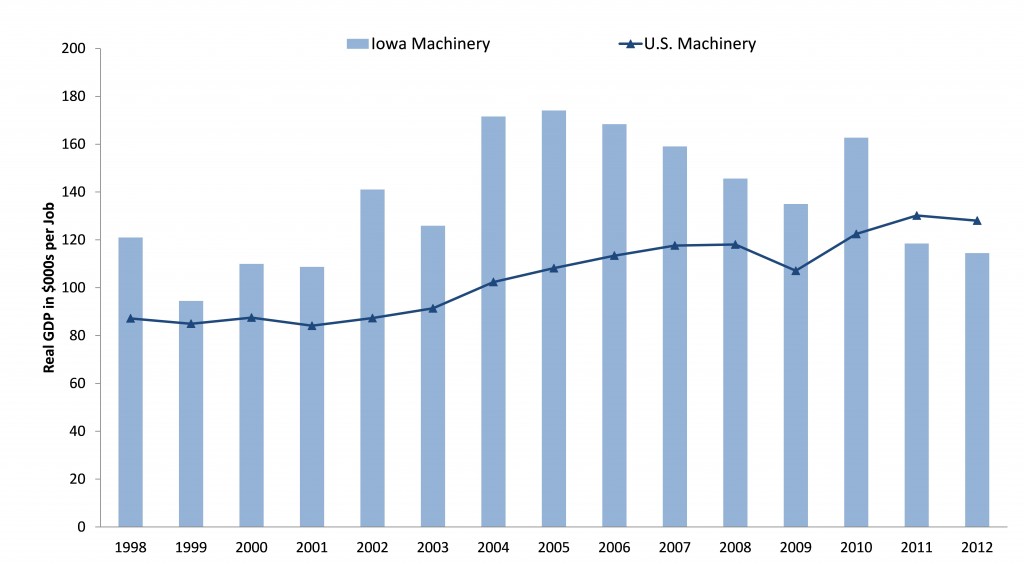 Government statistics show Iowa has a disproportionate share of U.S. jobs in most subsectors of machinery manufacturing—a sign that expertise exists here. Nationwide data on jobs and gross domestic product (GDP) show machinery makers rank as the second-largest manufacturing subsector in Iowa behind food manufacturing. Compared to the country as a whole, Iowa outpaces its proportional share of machinery manufacturing jobs in all subsectors but mining. The state has nearly 11 times the number of jobs in construction machinery as it should, based on Iowa’s share of the U.S. workforce, and 16 times the expected number of jobs in agricultural implement manufacturing (see Figure 1).
Government statistics show Iowa has a disproportionate share of U.S. jobs in most subsectors of machinery manufacturing—a sign that expertise exists here. Nationwide data on jobs and gross domestic product (GDP) show machinery makers rank as the second-largest manufacturing subsector in Iowa behind food manufacturing. Compared to the country as a whole, Iowa outpaces its proportional share of machinery manufacturing jobs in all subsectors but mining. The state has nearly 11 times the number of jobs in construction machinery as it should, based on Iowa’s share of the U.S. workforce, and 16 times the expected number of jobs in agricultural implement manufacturing (see Figure 1).

What’s it all mean?
CIRAS experts are pondering that as part of a five-year project funded by the United States Economic Development Administration’s University Center Program. CIRAS spent much of November and December questioning Iowa machinery makers about their businesses and use of technology. The plan is to analyze all the information, develop a strategy and path going forward, then present it all to the machinery makers at the special CIRAS sponsored summit at the Gateway Hotel and Conference Center in Ames.
“It all centers around innovation and technology,” said Shankar Srinivasan, a CIRAS program manager. “Those are the ropes through which we are trying to control the horse.”
Statistics indicate that Iowa’s machinery-making horse has wandered slightly off the path in recent years.
Iowa machinery makers have seen real GDP per job decline almost every year since 2005, despite a gradual upward trend in the national numbers (see Figure 2). Iowa’s sustained period of above-average productivity ended in 2011, when state numbers dipped below the national average. Some of the decline might be a normal part of the business cycle, Srinivasan believes. Experts believe Iowa’s dominant and highly cyclical agricultural equipment industry is in the early portion of a declining phase—meaning a normal downturn in farm machinery production might be pushing down the sector’s numbers as a whole. Or, the drop in GDP per job might be a more troubling sign of some other problem in declining productivity.

CIRAS experts intend to discuss all this on April 2 as part of an overarching effort to help machinery makers improve. The intent is to help every Iowa machinery business that participates in the summit develop a strategy that includes advice on what new technologies or innovative ideas might improve his or her business.
“Our goal is to bring that GDP per job number from a state of decline to either a stable or an inclined state,” Srinivasan said.
The CIRAS Machinery Manufacturing Innovation Summit is scheduled for April 2 at the Gateway Hotel in Ames. For more details on registration, click here.